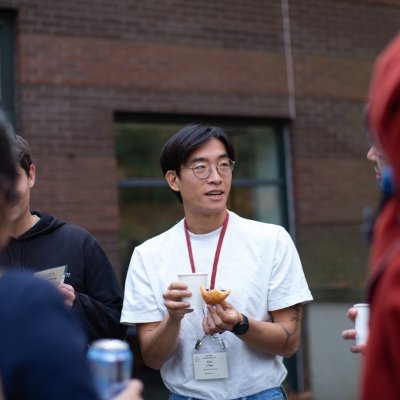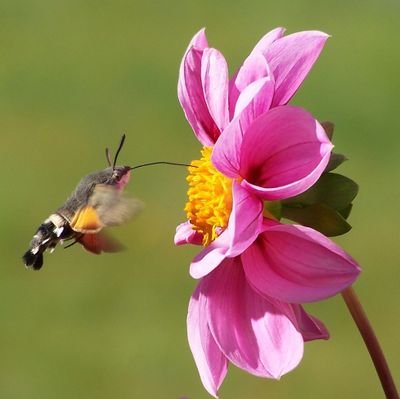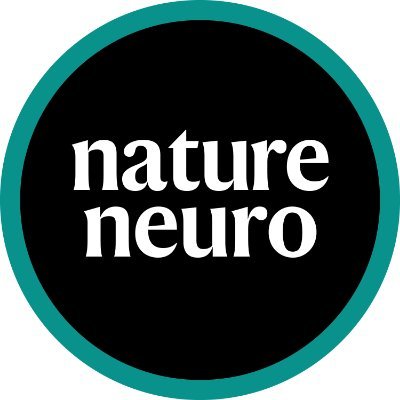
Panagiotis Eleftheriadis
@p_elef
Followers
47
Following
445
Media
2
Statuses
50
PhD candidate @IMPRS_QBEE @BahlLab | Research Associate @HarvardOEB | prev. GSN @LMU_Muenchen
Constance, Germany
Joined March 2022
Proud to present our paper revealing the CART peptide as a modulator of the motor output in demanding tasks out in @PNASnews. https://t.co/4NnO8cxrje
2
3
17
We are proud to have @_maxcapelle's paper out on bioRxiv! He found that phototactic behavior in #zebrafish switches during #ontogeny🐟🔆Through elegant behavioral dissections, he identifies the navigational strategies related to this transition. https://t.co/QLVAacO0kC Thread 👇
10
11
23
Excited to share that the astrocyte-centered half of my thesis work is now out @ScienceMagazine! With @MishaAhrens @marcduque3
https://t.co/QL4dMq7byo 1/8
science.org
Both neurons and glia communicate through diffusible neuromodulators; however, how neuron-glial interactions in such neuromodulatory networks influence circuit computation and behavior is unclear....
7
22
100
I'm really happy to share the first preprint of my PhD work in @JJFosterLab! During a fruitful collaboration with @gregoeur, we uncovered a surprising feature of bees' eyes! https://t.co/gYjDJpSdy4
biorxiv.org
Many insects rely on skylight polarization patterns to navigate their habitats. To perform this vital task, most insect species have evolved specialized ommatidia in the dorsal rim area (DRA) of...
0
3
10
Our new paper on the circuit implementation of evidence integration in larval zebrafish is now on bioRxiv!
We are proud to present our new preprint “Correlative light and electron microscopy reveals the fine circuit structure underlying evidence accumulation in larval zebrafish”, just posted on bioRxiv ( https://t.co/pYHYh26vSo). (1/10)
1
4
16
“the probability is zero that any perceptual system has been shaped by natural selection to represent the true structure of an observer-independent world.” Our new article in the Journal of Consciousness Studies. https://t.co/NcTTMWTTE2
52
75
441
PS2.183 Simulating insect polarization vision to model a biologically accurate polarization compass. George Kolyfetis @kolyfetis
0
2
20
This is one of the first interviews that got me hooked and really inspired me along with the incredible discussions with @BernardoKastrup @vervaeke_john @drmichaellevin @donalddhoffman
0
0
1
Re-listened to this "mega" interview/discussion between @TOEwithCurt and Karl Frinston from a while back. On the Free Energy Principle and active inference, "shared narratives", hierarchies and much more. Definitely worth listening to more than once! https://t.co/VoCMacPMBH
1
0
1
Iteratively coarse-graining of neural activity reconciles the apparent dichotomy between sparse coding at the neural level versus the redundant population code across a diverse range of species
New banger from @DrBMunn and co. TL/DR: coarse-graining multi-species calcium data allows us to link across scales and make some inferences about how information processing might work in the brain. Super fun collab with @eli_j_muller @DrBreaky & Ethan Scott
5
24
126
Embodied minds, Cognition, Biology, Conscious agents, Bioelectricity and more in an amazing interview by Curt Jaimungal with Prof. Michael Levin here in Boston!
Michael Levin IN-PERSON AT TUFTS / LEVIN LAB YouTube: https://t.co/CDjNLqX2PI Spotify: https://t.co/ZYTJ9njbaN
0
0
6
We developed ‘dynamical social clamp’ (akin to ‘patch clamp’ in neuro)—using VR—allowing realtime bidirectional feedback between real and model-controlled virtual fish. We find temporal coordination considerably impacts spatial responsiveness in groups!
nature.com
Nature Communications - It is known that spatially localized interactions can give rise to self-organized collective motion. Here, by studying pairwise interactions in juvenile zebrafish, authors...
2
33
107
Excited to share our review on natural visual behavior and active sensing by @SkybergRolf at Current Opinion in Neurobiology. There are a lot of important visual computations that get engaged once an animal is actively interacting with the environment! https://t.co/ViYXnP0EWi
1
26
101
In monkeys freely viewing natural images, #visual neurons from V1 to IT encode feature information in the gaze-centered space with limited predictive remapping and develop a neural network model to map the receptive fields https://t.co/vb3LYvneSp
nature.com
Nature Neuroscience - Xiao et al. show that, in monkeys freely viewing natural images, visual neurons from V1 to the inferior temporal cortex encode feature information in the gaze-centered space...
1
12
66
How do sky conditions impact bumblebee navigation? In collab w/ @araujobees of @INSECTLab_SU Frida & @kolyfetis took polarization images of skies at @navarinoNEO that were clear, overcast & even full of Sahara dust! These help us understand how insects use the sky to navigate🐝🧭
0
10
26
A group of 39 prominent biologists and philosophers has released the New York Declaration on Animal Consciousness, a document that states that there’s a “realistic possibility” of consciousness in many animals. @danfalk reports:
quantamagazine.org
A group of prominent biologists and philosophers announced a new consensus: There’s “a realistic possibility” that insects, octopuses, crustaceans, fish and other overlooked animals experience...
24
188
468
It’s amazing how many empirical features of interactions and collective response can emerge from a simple imperative: to minimize surprise. Out today in PNAS @PNASNews - with @conorheins @richardpmann Karl Friston and colleagues! @CBehav @maxplanckpress
https://t.co/gZcyDuG285
7
111
408
The Kilosort4 paper is now published @naturemethods. We put a lot of work into building and properly documenting all things Kilosort (including for older versions). w/ @computingnature #kilosort paper: https://t.co/db36Z7T7Ke code: https://t.co/ULZKyF8uy9
6
50
237
Congratulations, @lisafenk! Our group leader receives an ERC Consolidator Grant of two million euros for her research on the Drosophila visual system. In the coming years, she and her team will investigate how retinal movements benefit visual perception in flies. Find out more:
14
11
140
Embodied cognition, neuron-less memory and bioelectriciy https://t.co/dt4EsMoAVq
scientificamerican.com
Tiny clumps of cells show basic cognitive abilities, and some animals can remember things after losing their head
0
0
7






















